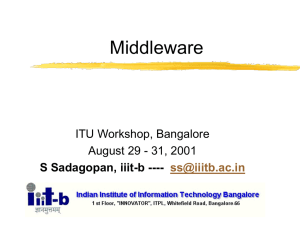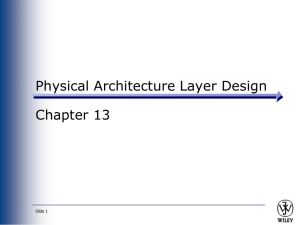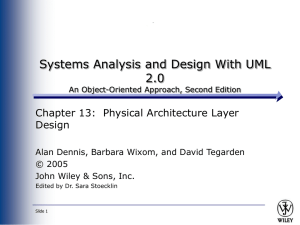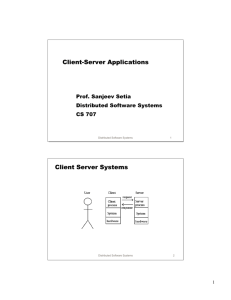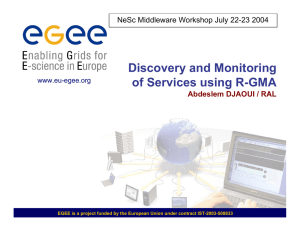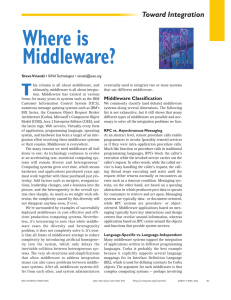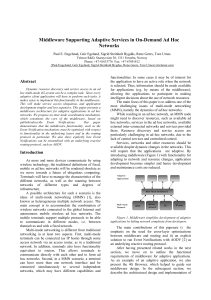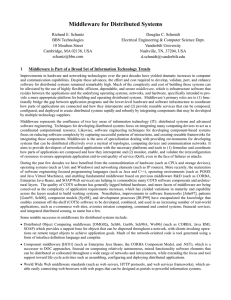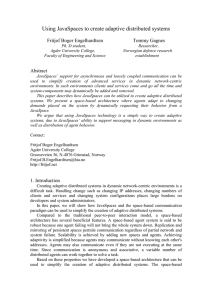Distributed Systems () - METU Computer Engineering
advertisement
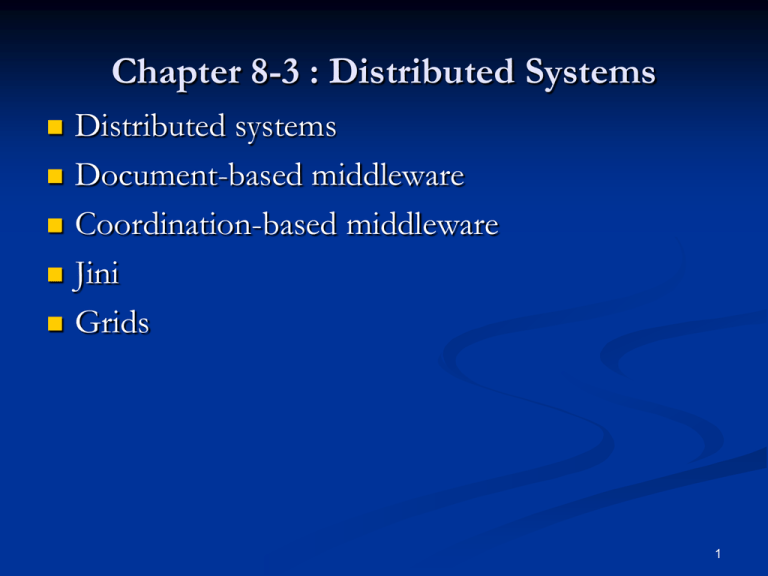
Chapter 8-3 : Distributed Systems Distributed systems Document-based middleware Coordination-based middleware Jini Grids 1 Distributed Systems Figure 8-29. Comparison of three kinds of multiple CPU systems. 2 Middleware Figure 8-30. Positioning of middleware in a distributed system. Middleware layer provides certain data structures and operations that allow processes and users on far-flung machines to interoperate in a consistent way In a sense, middleware is like the operating system of a distributed system 3 Document-Based Middleware (1) Figure 8-35. The Web is a big directed graph of documents. The web is a distributed system which looks like a giant collection of hyperlinked documents It is fundamently a client-server system 4 Document-Based Middleware (2) When the browser gets the page http://www.minix3.org/doc/faq.html. 1. The browser asks DNS for the IP address of www.minix3.org. 2. DNS replies with 130.37.20.20. 3. The browser makes a TCP connection to port 80 on 130.37.20.20. 4. It then sends a request asking for the file doc/faq.html. 5. The www.acm.org server sends the file doc/faq.html. 6. The TCP connection is released. 7. The browser displays all the text in doc/faq.html. 8. The browser fetches and displays all images in doc/faq.html. 5 Coordination-Based Middleware (1) Linda A system for communication and synchronization Independent processes communicate via an abstract tuple space A tuple is a structure of one or more fields, each of which is a value of some type supported by the base language 6 Matching Tuples A match occurs if the following three conditions are all met: 1. 2. 3. The template and the tuple have the same number of fields. The types of the corresponding fields are equal. Each constant or variable in the template matches its tuple field. 7 Implementing a General Semaphore in Linda Post k notes as the initial value of a semaphore do K times postnote(‘s’) Removenote is equivalent to wait and postnote to signal 8 Jini Jini clients and services communicate and synchronize using JavaSpaces which are modeled on the Linda tuple space. Methods defined in a JavaSpace: 1. Write: put a new entry into the JavaSpace. 2. Read: copy an entry that matches a template out of the JavaSpace. 3. Take: copy and remove an entry that matches a template. 4. Notify: notify the caller when a matching entry is written. 9 Grids A grid is a large, geographically dispersed, and usually heterogeneous collection of machines connected by a private network or the internet, and which offers a set of services to its users The motivation for building a grid is that when an organization did not need all of its computing power another organization could use the excess power for its needs and vice versa A popular middleware in the grid world is the Globus toolkit which provides a framework for users to share computers, files, and other resources for building distributed applications 10

